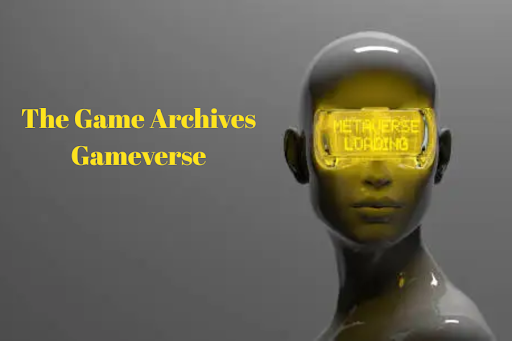The Game Archives Gameverse : Preserving the Legacy of Video Game History
The Game Archives Gameverse is a forward-thinking digital project committed to documenting and preserving the storied legacy of video games. With a meticulously curated database, it stands as an essential hub for gaming enthusiasts, researchers, developers, and historians looking to explore the evolution and cultural significance of the gaming world.
What Is The Game Archives Gameverse?
At its foundation, The Game Archives Gameverse represents a structured, comprehensive digital archive focused on cataloging video games that have made a notable impact either historically, culturally, or both. It serves as a resource that goes beyond simple game listings—it delves into gameplay mechanics, story architecture, game design ideologies, and the societal backdrop of each title.
This archive doesn’t merely spotlight popular games; it seeks to capture the entire spectrum of video game history—from obscure indie gems and arcade classics to the mainstream franchises that have defined generations. It recognizes that games are more than just entertainment—they are cultural artifacts that deserve preservation and academic attention.
Why Is Game Preservation Crucial?
Video games have rapidly become one of the most powerful and expressive mediums of art and storytelling. Yet, unlike books or movies, games are vulnerable to technological decay. As hardware becomes obsolete and digital platforms vanish, many titles risk fading into obscurity.
Without initiatives like The Game Archives Gameverse, an essential piece of our digital heritage could be lost. Cartridges deteriorate, online servers shut down, and old operating systems become incompatible with newer hardware. Game preservation is about more than nostalgia; it’s about safeguarding creative and cultural expressions for future generations.
This archive plays a vital role in keeping the spirit and knowledge of classic titles alive, ensuring that future game developers, historians, and fans can access the wisdom and inspiration of the past.
Features That Define The Game Archives Gameverse
1. Extensive Game Listings
The backbone of The Game Archives Gameverse is its robust and detailed library of games. The archive offers thousands of entries spanning multiple platforms—from early consoles like the Atari and NES to modern systems and mobile platforms. Each entry typically includes:
- Game title
- Developer and publisher information
- Release dates
- Supported platforms
- Genre classification
- Gameplay summaries
- Noteworthy features
This information allows users to understand not only what a game is but how it functions and why it matters. Whether you’re doing academic research or simply exploring out of personal interest, the listings provide a comprehensive starting point.
2. Insightful and In-Depth Game Analyses
Rather than settling for surface-level data, The Game Archives Gameverse takes a deep dive into game content. Entries often feature in-depth analyses that explore the development processes, thematic layers, gameplay innovations, and the broader cultural reception of each game.
These critical breakdowns serve as valuable resources for anyone interested in game design theory or the social impact of interactive media. For example, the platform might examine how a particular RPG reshaped storytelling in games or how a platformer pioneered new mechanics that became industry standards.
3. Community-Driven Contributions
What sets The Game Archives Gameverse apart is its dedication to community participation. The platform thrives on contributions from users ranging from casual players and retro enthusiasts to academic professionals and game developers.
Users can:
- Submit new game entries
- Contribute reviews or retrospectives
- Share trivia, secrets, or game lore
- Upload screenshots, videos, or scanned manuals
This collective effort ensures that the archive is continually evolving, dynamic, and reflective of the broader gaming community’s knowledge and passion.
4. Well-Structured and Searchable Game Database
Organization is key to the success of a large-scale archive, and The Game Archives Gameverse excels in this area. Its database is highly navigable, with intuitive filters and sorting tools that help users find exactly what they’re looking for.
You can browse or filter by:
- Console or hardware generation
- Release year
- Developer or publisher
- Genre or subgenre
- Historical themes
- Game mechanics or innovations
This structure not only helps users discover games more easily but also highlights trends and transformations in game design and culture over time.
5. Placing Games in Historical and Cultural Context
One of the most powerful features of The Game Archives Gameverse is its ability to contextualize games within their respective eras. Rather than treating games as isolated products, the platform explores how they were shaped by and responded to the world around them.
For instance:
- How did Cold War politics influence war games in the ’80s?
- What social movements were reflected in the narratives of early 2000s RPGs?
- How did changing technologies and economic trends shape game development cycles?
By providing this historical insight, the archive positions video games as reflections of society and culture, similar to literature, film, or music.
6. Educational Value and Deep Learning
In addition to its entertainment and archival roles, The Game Archives Gameverse serves as an educational tool. It promotes critical analysis of game mechanics, storytelling, player agency, and design evolution.
Whether comparing franchises over decades or exploring how one game influenced a genre, users can engage in thoughtful analysis that goes far beyond casual play. This makes the platform particularly valuable for educators, researchers, and students interested in digital humanities, media studies, and game development.
The archive encourages users to think about:
- Why are certain mechanics fun?
- How do games convey complex ideas?
- What do these experiences say about the cultures that produced them?
These questions elevate gaming to a space of critical and creative reflection.
7. Rich Multimedia Integration
To further enrich the archive experience, The Game Archives Gameverse includes various multimedia elements alongside textual information. Many game entries come with:
- Screenshots from different versions and eras
- Trailers and gameplay footage
- Concept art and design sketches
- Original soundtracks and in-game audio
- Scanned instruction manuals and promotional materials
This visual and auditory content brings the archived games to life and makes the site more immersive. Whether you’re reminiscing about a game you played as a child or discovering a hidden gem, multimedia helps recreate the emotional and aesthetic impact of these digital worlds.
A Living Archive with Lasting Impact
What makes The Game Archives Gameverse more than just a reference site is its dynamic, evolving nature. The archive is not static; it grows and adapts with the gaming world. New discoveries, restored classics, indie projects, and emerging genres continually feed into the ecosystem.
Because it relies on both expert curation and community input, the platform remains relevant and fresh. Every user has a chance to shape the archive’s direction, ensuring that no important piece of gaming history is left behind.
As new generations of players and developers emerge, the archive becomes a bridge connecting the past with the future, honoring innovation while promoting understanding.
Conclusion
The Game Archives Gameverse stands as a beacon in the digital age, preserving not just the titles of games but the stories, cultures, and innovations behind them. By combining comprehensive game documentation, historical context, and community contributions, it goes beyond being a simple catalog it becomes a living museum of interactive entertainment. As the gaming industry continues to evolve, this platform ensures that its roots are never forgotten. Whether you’re a lifelong gamer, aspiring developer, or curious historian, The Game Archives Gameverse offers a deep and meaningful connection to the legacy of video games. It doesn’t just celebrate the past, it empowers the future of gaming knowledge.
FAQs:
1. What is The Game Archives Gameverse?
The Game Archives Gameverse is a digital platform dedicated to preserving the history of video games. It features detailed listings, analyses, and multimedia content for thousands of titles across all gaming generations.
2. Why is The Game Archives Gameverse important?
The platform plays a critical role in game preservation by safeguarding information, media, and historical context of games that might otherwise be lost due to outdated hardware and fading digital availability.
3. Who can contribute to The Game Archives Gameverse?
Anyone from casual gamers and fans to developers and academics can contribute by submitting game entries, reviews, trivia, screenshots, and more, helping keep the archive active and diverse.
4. Does the archive only include popular games?
No. The Game Archives Gameverse includes a wide range of titles from indie projects and forgotten classics to blockbuster franchises ensuring a comprehensive view of the gaming landscape.
5. Is The Game Archives Gameverse suitable for researchers or students?
Yes, the platform is an excellent resource for academic study. It provides in-depth analyses, cultural context, and multimedia that can support research in game design, media studies, and digital history.
6. How does the platform help preserve video game culture?
By documenting gameplay mechanics, storytelling, development history, and cultural impact, The Game Archives Gameverse preserves the full narrative of gaming’s evolution for future generations.
Stay in touch to get more news & updates on Forbes Take!






